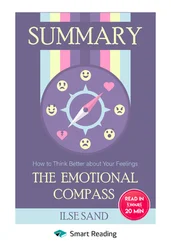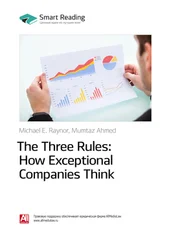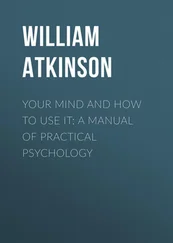Ehri, L. C., Nunes, S., Stahl, S., & Willows, D. (2001) . Systematic phonics instruction helps students learn to read: Evidence from the national reading Panel’s meta-analysis. Review of Educational Research, 71, 393–447.
Einhorn, H. J. (1986) . Accepting error to make less error. Journal of Personality Assessment, 50, 387–395.
Eisenberg, L. (1977) . The social imperatives of medical research. Science, 198, 1105–1110.
Eisenberg, D. M., Kessler, R., Foster, C., Norlock, F., Calkins, D., & Delbanco, T. (1993) . Unconventional medicine in the United States. The New England Journal of Medicine, 328(4), 246–252.
Ellis, B. J., & Bjorklund, D. F. (Eds.). (2005) . Origins of the social mind: Evolutionary psychology and child development. New York: Guilford.
Emery, R. E., Otto, R. K., & O’Donohue, W. T. (2005) . A critical assessment of child custody evaluations. Psychological Science in the Public Interest, 6(1), 1–29.
Engel, J. (2008) . American therapy. New York: Gotham Books.
Epstein, A. S. (2008) . An early start on thinking. Educational Leadership, 65(5), 38–42.
Ernst, E., & Abbot, N. C. (1999) . I shall please: The mysterious power of placebos. In S. Della Sala (Ed.), Mind myths: Exploring popular assumptions about the mind and brain (pp. 209–213). Chichester, England: John Wiley & Sons.
Estes, W. (1979) . Experimental psychology: An overview. In E. Hearst (Eds.), The first century of experimental psychology (pp. 12–38). Hillsdale, NJ: Erlbaum.
Evans, J. St. B. T. (2005) . How to do research: A psychologist’s guide. Hove, England: Psychology Press.
Ewing, C. P. (2006, January). Testing tool in question. APA Monitor, p. 61.
Fackelman, K. (1996, November 9). Gastrointestinal blues. Science News, 150, 302–303.
Fancher, R. (1985) . The intelligence men. New York: W. W. Norton.
Farber, I. B., & Churchland, P. S. (1995) . Consciousness and the neurosciences: Philosophical and theoretical issues. In M. S. Gazzaniga (Ed.), The cognitive neurosciences (pp. 1295–1306). Cambridge, MA: MIT Press.
Farha, B. (2007) . Paranormal claims: A critical analysis. Lanham, MD: University Press of America.
Farha, B., & Steward, G. (2006) . Paranormal beliefs: An analysis of college students. Skeptical Inquirer, 30(1), 37–40.
Ferguson, C. J. (2009) . Is psychological research really as good as medical research? Review of General Psychology, 13, 130–136.
Fernald, D. (1984) . The Hans legacy. Hillsdale, NJ: Erlbaum.
Feshbach, S., & Tangney, J. (2008) . Television viewing and aggression. Perspectives on Psychological Science, 3, 387–389.
Finkel, A. M. (1996, May). Who’s exaggerating? Discover, 17(5), 48–54.
Fischer, P. et al. (2011a). The bystander-effect: A meta-analytic review on bystander intervention in dangerous and non-dangerous emergencies. Psychological Bulletin, 137, 517–537.
Fischer, P., Greitemeyer, T., Kastenmüller, A., Vogrincic, C., & Sauer, A. (2011b). The effects of risk-glorifying media exposure on risk-positive cognitions, emotions, and behaviors: A meta-analytic review. Psychological Bulletin, 137, 367–390.
Flynn, J. R. (2007) . What is intelligence? Cambridge: Cambridge University Press.
Foster, E. A., Jobling, M. A., Taylor, P. G., Donnelly, P., Deknijff, P., Renemieremet, J., Zerjal, T., & Tyler-Smith, C. (1998) . Jefferson fathered slave’s last child. Nature, 396, 27–28.
Foster, R. G., & Roenneberg, T. (2008) . Human responses to the geophysical daily, annual and lunar cycles. Current Biology, 18, R784–R794.
Fountain, H. (2006, January 15). On not wanting to know what hurts you. New York Times, p. WK14.
Fox, R. E. (1996) . Charlatanism, scientism, and psychology’s social contract. American Psychologist, 51, 777–784.
Frank, R. H. (2007) . The economic naturalist. New York: Basic Books.
Frazier, K. (2009) . Pew/AAAS poll. Skeptical Inquirer, 33(6), 11–13.
Frazier, K. (2010) . Three-country evolution poll. Skeptical Inquirer, 34(6), 5–6.
Funder, D. C. (2009) . Naive and obvious questions. Perspectives on Psychological Science, 4, 340–344.
Galovski, T. E., Malta, L. S., & Blanchard, E. B. (2006) . Road rage: Assessment and treatment of the angry, aggressive driver. Washington, DC: American Psychological Association.
Gardner, D. (2008) . The science of fear. New York: Dutton. ✓ Gardner, M. (1972, April). Mathematical games: Why the long arm of coincidence is usually not as long as it seems. Scientific American, 227(4), 110–112.
Gardner, M. (2006) . The memory wars. Skeptical Inquirer, 30(1), 28–31.
Gardner, M. (2010) . Oprah Winfrey: Bright (but gullible) billionaire. Skeptical Inquirer, 34(2), 54–56.
Gaunt, R. (2006) . Couple similarity and marital satisfaction: Are similar spouses happier? Journal of Personality, 74, 1401–1420.
Gawande, A. (2010) . The checklist manifesto: How to get things right. New York: Metropolitan Books.
Gaynor, S. T. (2004) . Skepticism and caricatures: B. F. Skinner turns 100. Skeptical Inquirer, 28(1), 26–29.
Geary, D. C. (2005) . The origin of the mind: Evolution of brain, cognition, and general intelligence. Washington, DC: American Psychological Association.
Geary, D. C. (2008) . An evolutionarily informed education science. Educational Psychologist, 28, 179–195.
Gelman, A. (2008) . Red state, blue state, rich state, poor state. Princeton, NJ: Princeton University Press.
Gernsbacher, M. A. (2007, May). The value of undergraduate training in psychological science. APS Observer, 20, 5–6.
Ghiselin, M. T. (1989) . Intellectual compromise. New York: Paragon House.
Gigerenzer, G. (2002) . Calculated risks: How to know when numbers deceive you. New York: Simon & Schuster.
Gigerenzer, G. (2004) . Dread risk, September 11, and fatal traffic accidents. Psychological Science, 15, 286–287.
Gigerenzer, G. (2006) . Out of the frying pan into the fire: Behavioral reactions to terrorist attacks. Risk Analysis, 26, 347–351.
Gigerenzer, G., Gaissmaier, W., Kurz-Milcke, E., Schwartz, L. M., & Woloshin, S. (2007) . Helping doctors and patients make sense of health statistics. Psychological Science in the Public Interest, 8, 53–96.
Gilbert, D. (2006) . Stumbling on happiness. New York: Alfred A. Knopf.
Gilovich, T. (1991) . How we know what isn’t so: The fallibility of human reason in everyday life. New York: Free Press.
Gilovich, T., Griffin, D., & Kahneman, D. (Eds.). (2002) . Heuristics and biases: The psychology of intuitive judgment. New York: Cambridge University Press.
Gladwell, M. (2004, December 13). The picture problem. The New Yorker, pp. 74–81.
Gladwell, M. (2010, May 17). The treatment. The New Yorker, pp. 69–77.
Gleitman, H. (1981) . Psychology. New York: W. W. Norton.
Goldacre, B. (2008) . Bad science. London: Fourth Estate.
Gorchoff, S., John, O. P., & Helson, R. (2008) . Contextualizing change in marital satisfaction during middle age. Psychological Science, 19, 1194–1200.
Gosling, S. D. (2001) . From mice to men: What can we learn about personality from animal research? Psychological Bulletin, 127, 45–86.
Gosling, S. D., Simine, V., Srivastava, S., & John, O. P. (2004) . Should we trust web-based studies? A comparative analysis of six preconceptions about Internet questionnaires. American Psychologist, 59, 93–104.
Goswami, U. (Ed.). (2008) . Cognitive development: The learning brain. London: Psychology Press.
Gould, S. J. (1987) . Justice Scalia’s misunderstanding. Natural History, 96, 14–21.
Grady, D. (2008, June 24). From a prominent death, some painful truths. New York Times, p. D5.
Grady, D. (2009, January 6). Should patients be told of better care elsewhere? New York Times, p. D1.
Читать дальше












